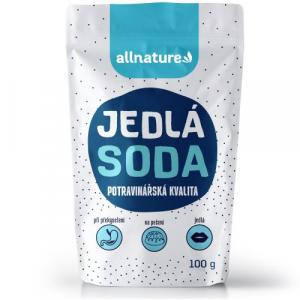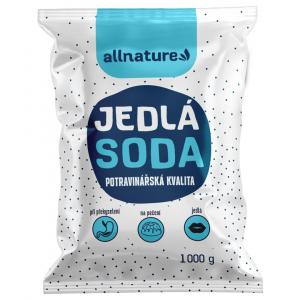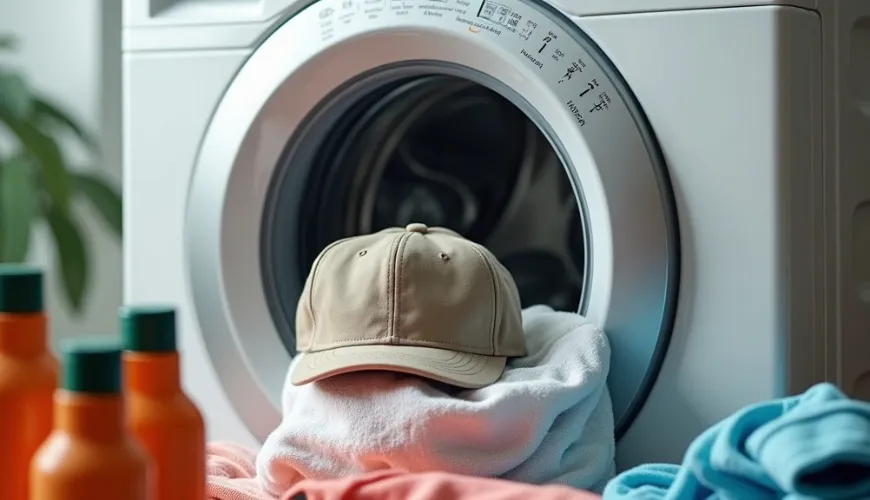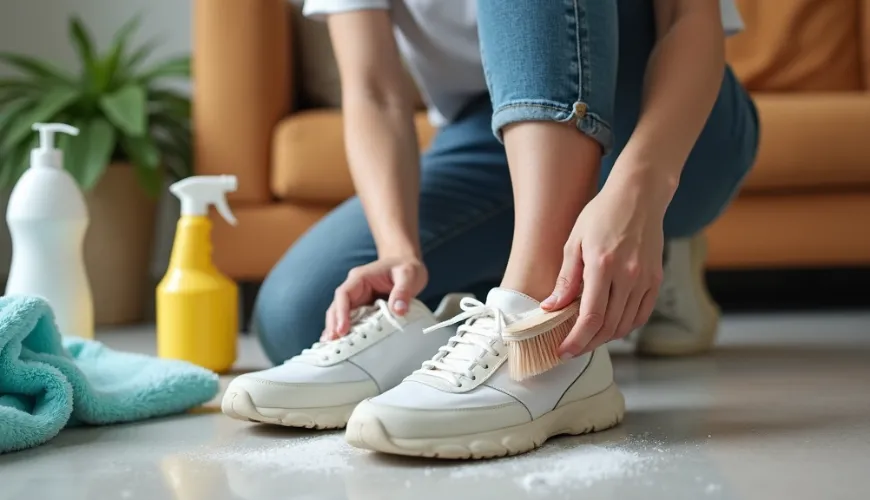
How to Clean a Pot from the Outside and Remove Burns and Stains
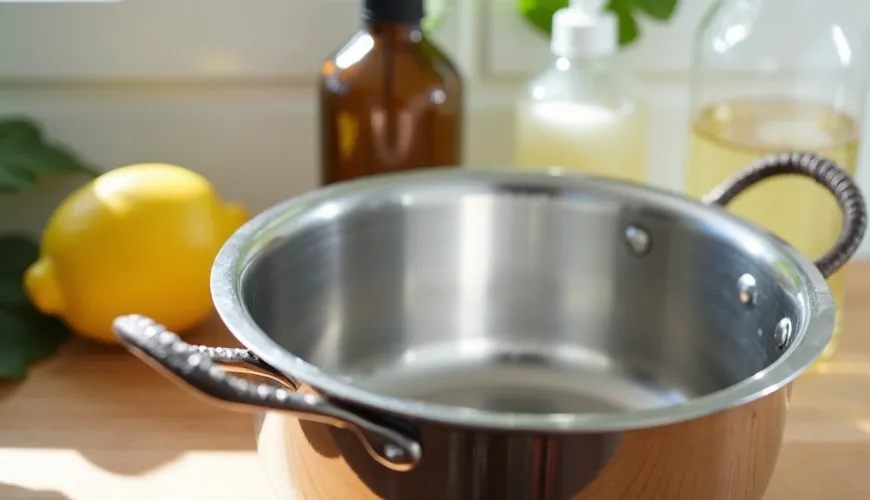
How to Effectively Clean a Burnt Pot from the Outside - Tips That Really Work
When cooking, anything can happen – the sauce overflows, water boils away, or oil heats up and splatters. The result? When we take the pot off the stove, we find its bottom and sides covered with a black residue or grease that just won't come off. And while the inside of the cookware can be washed relatively easily, the question “how to clean the pot from the outside” is not so simple. The exterior is often overlooked, yet it is the part that comes into contact with direct heat, is exposed to burns, and easily loses its shine and functionality.
Dirty exterior walls of the pot are not just an aesthetic problem. Residues can affect the even distribution of heat, impacting cooking efficiency and, in the long run, energy consumption. A clean pot is not only prettier but also more efficient. So how do you tackle it when a scrubber is not enough, and ordinary detergent can't handle greasy burns?
What Doesn't Work and What Can Damage Cookware
Before we dive into proven methods, it's important to mention those often found on the internet but can do more harm than good. For example, using aggressive chemicals like technical acetone or strong degreasers designed for ovens might partially remove dirt but can damage the cookware surface, especially if it's stainless steel pots or cookware with a Teflon coating. Similarly, abrasive products like steel wool can scrape off the burn but leave scratches that accumulate more dirt over time.
Whether you have a stainless steel pot, an enamel pot from your grandma, or a modern titanium piece, it's always better to opt for gentler natural-based methods that won't damage the surface or your health.
The Power of Natural Ingredients - Soda, Vinegar, and Lemon
One of the most effective ways to clean a pot from the outside is a combination of baking soda and vinegar. This duo tackles grease, burns, and unsightly water stains. Simply place the pot upside down on an old towel or in the sink, sprinkle the bottom with baking soda, and pour vinegar over it. Wait a few minutes for the mixture to react – it will create foam that starts to loosen the dirt. Then, wipe everything off with a soft sponge or brush. If the dirt is more stubborn, let it sit longer or repeat the process.
Another helper is lemon juice or a half lemon, which you can rub over the entire surface of the pot. Citric acid has strong cleaning properties and leaves a pleasant scent. It works particularly well on hard water stains or mineral deposits that often settle at the bottom.
Try our natural products
A Kitchen Story - How a Lemon Saved a Holiday Pot
One reader shared an experience showing that even a seemingly ruined pot can shine like new again. She received from her grandmother an old enamel pot, used for generations for holiday roasts. After years of being forgotten in the attic, it was covered in a thick layer of grease and burns. It seemed it would never shine again. But she decided to try a natural approach: she coated the pot's bottom with a paste of baking soda and lemon juice and left it overnight. In the morning, she gently scrubbed it with a sponge, and the result surprised her – the pot not only looked new but also smelled pleasant.
This experience confirms that nature often offers solutions where chemistry fails.
How to Clean a Pot from the Outside According to Material
Each type of cookware deserves a different approach. What works for stainless steel may not be suitable for enamel or aluminum. Therefore, it's important to know what you're dealing with.
Stainless Steel and Steel Pots
These materials are among the most durable and can withstand rougher handling. Still, it's best to avoid metal scrubbers. Instead, try applying a paste of water and soda to a hot surface – heat helps release grease. You can also use the steam effect: heat water with vinegar in the pot, turn it upside down over the steam, and after a few minutes, wipe off the dirt.
Aluminum Pots
With aluminum, extra caution is needed. It reacts with acids, so lemon or vinegar is not ideal. Instead, opt for a mixture of water and baking soda. Creating a paste of flour and soda also helps, acting gently abrasive without damaging the surface.
Enamel Pots
Enamel is beautiful but fragile. If it's cracked, avoid scrubbing altogether – water could get underneath and accelerate corrosion. Use a soft cloth and a mixture of soda and water, or a very diluted vinegar.
Prevention as the Best Cleaner
The best way to avoid complicated cleaning is to prevent the pot from getting dirty. Always let cookware cool before immersing it in water – a sudden temperature change can damage the surface and reduce its durability. After each use, wipe the bottom and sides with the soft side of a sponge and don't leave dried residues for too long. If you cook on gas, check if the flame is too high – this often causes pot charring.
A simple tip? Place a thin cork pad or an old cloth napkin under the pot during transport or storage. This prevents further dirt and scratches.
Eco-Friendly Cleaning Products - Gentle on Nature and Our Health
Today, there is a wide range of eco-friendly cleaners available, which are not only effective but also biodegradable and gentle on our home and nature. Products based on plant enzymes, citrate, or soda salt can remove burns just as well as regular chemicals, without the risk of skin irritation or inhaling aggressive fumes. Many of them are offered by Czech brands that focus on sustainability and local production.
According to the EWG (Environmental Working Group), kitchen cleaners are among the most common sources of home chemicals that remain on surfaces and can get into food. By choosing natural products, we protect not only cookware but primarily our health.
Patience and Regularity Bring Results
Cleaning a pot from the outside can be frustrating, especially if the dirt seems unremovable. But like with other household chores, regularity and patience pay off. Spending a few minutes after each cooking session on cookware care is much easier than later battling with years-old residues. Moreover, a clean pot is a joy to use. A shiny bottom, polished sides, and the feeling that we've managed everything without chemicals bring satisfaction that no detergent from an advertisement can conjure.
So next time you stand over a burnt pot wondering how to save it, remember: lemon, soda, vinegar – and a bit of kitchen patience.

